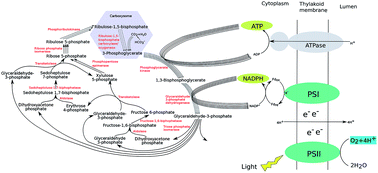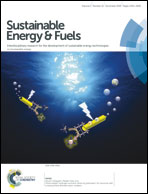Engineering photoautotrophic carbon fixation for enhanced growth and productivity
Abstract
Oxygenic photosynthesis is the origin of most organic carbon compounds on Earth and an essential part of the natural carbon cycle. Cyanobacteria, the only oxygenic photoautotrophic prokaryotes, are important in several natural processes: as primary sustainable producers, in providing oxygen to the atmosphere, and in nitrogen fixation. From a biotechnological perspective, cyanobacteria are ideal cell factories since (i) the required energy and carbon source, sunlight and CO2, are abundant and freely available, (ii) cyanobacteria are capable of producing a variety of natural products, which can be used as fuels, medicines, cosmetics etc., and (iii) metabolic engineering and synthetic biology tools of cyanobacteria are being developed rapidly, making them feasible as host organisms for heterologous production of interesting compounds. However, compared to commercially employed heterotrophic microorganisms, the growth and productivity of cyanobacteria are currently not competitive. Therefore, improving cyanobacterial growth and productivity is an important task to enable commercialization of cyanobacterial bioproducts. Such studies also offer important clues for increasing the photosynthesis and yield of crop plants, which is important in view of providing food for a rapidly increasing world population. There are many strategies targeting this task, such as optimizing cultivation conditions, engineering native pathways, and introducing synthetic pathways based on an understanding of overall metabolic networks. One major limitation of cyanobacterial productivity, however, is the low efficiency of carbon fixation through the Calvin–Benson–Bassham (CBB) cycle. In this review, we introduce and discuss the possibilities to enhance growth and productivity by engineering the CBB cycle. We also give a brief discussion of options to further extend the capabilities of cells to fix inorganic carbon by the introduction of other native and artificial carbon fixation cycles.

- This article is part of the themed collections: 3rd International Solar Fuels Conference and International Conference on Artificial Photosynthesis and Artificial Photosynthesis - From Sunlight to Fuels and Valuable Products for a Sustainable Future


 Please wait while we load your content...
Please wait while we load your content...